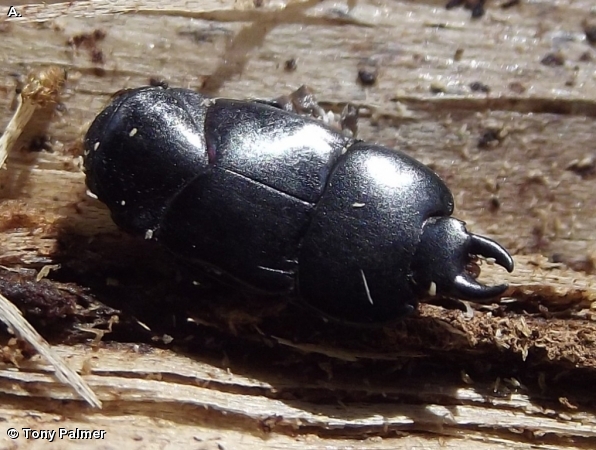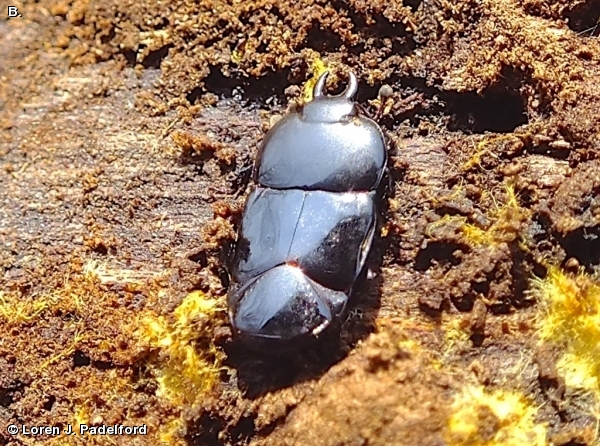
This is a hard shiny black beetle. It is about 1/3 of an inch long. It is flattened in shape. It has pincers in front of the head and has short elytra leaving much of the abdomen exposed (characteristic of Hister beetles). Notice the tiny mites on the beetle. The beetle is covered with Mites from the genus Lobogynioides. This is common for beetles of this type. This beetle was identified by Tony Palmer, an entomologist at the Henry Doorly Zoo. The antenna are short and elbowed with a club at the end.
This beetle was photographed on the Missouri River Trail. Its frequency in Fontenelle Forest is not known.
Hister beetles have shiny (metallic black or green) and shortened elytra. They also have elbowed antenna with clubbed ends. These beetles prey on tiny insects. The mites on the beetle do not feed on the beetle but use the beetle to provide transportation to the food they eat. Hister beetles have proved useful during forensic investigations to help in time of death estimation. Also, certain species are used in the control of livestock pests that infest dung and to control houseflies. Because they are predacious and will even eat other Hister beetles, they must be isolated when collected.
Disclaimer: The content of NatureSearch is provided by dedicated volunteer Naturalists of Fontenelle Forest who strive to provide the most accurate information available. Contributors of the images retain their copyrights. The point of contact for this page is: Eric Scholar.

